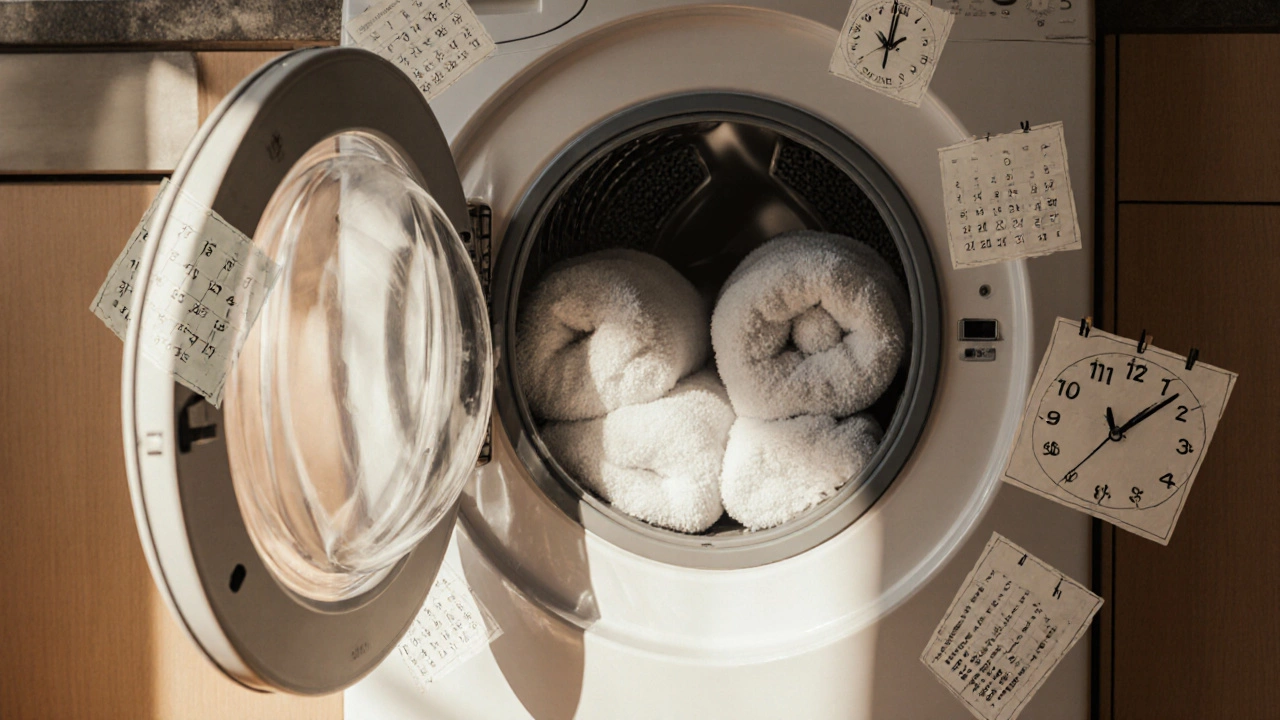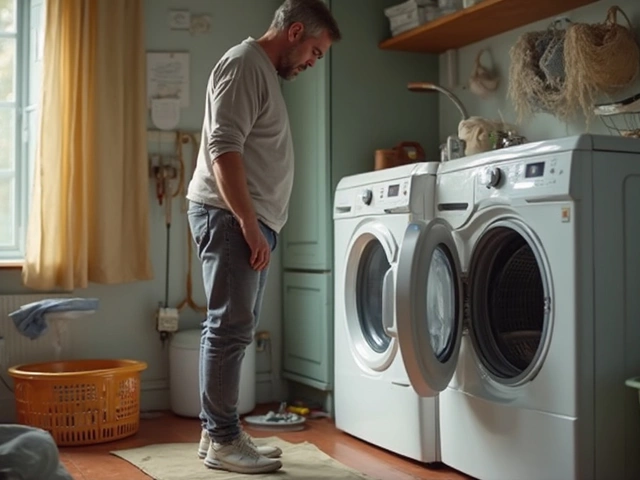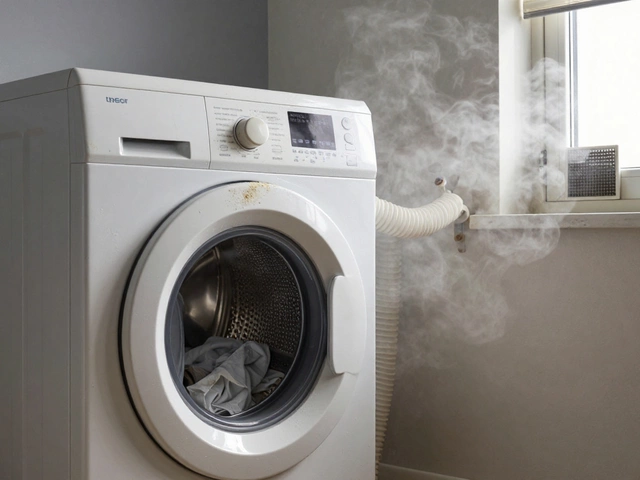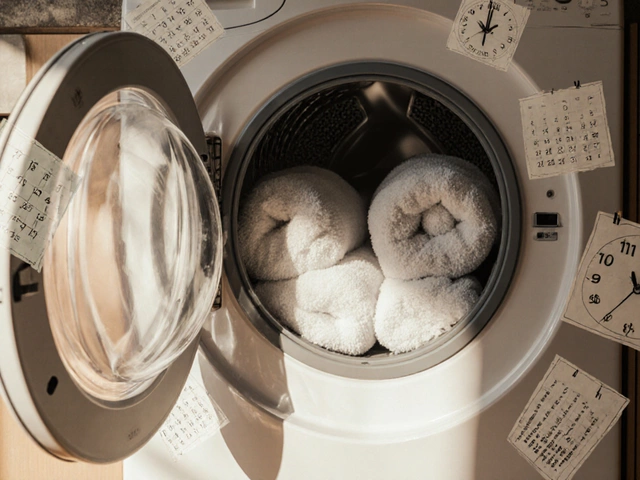Ever wondered how many years you can expect your Tumble dryer to keep churning out dry clothes before it gives up?
What "life expectancy" really means for a dryer
In the appliance world, "life expectancy" is just a fancy way of saying the average number of years a product works without major failure. It isn’t a guarantee - individual units can last longer or shorter depending on usage, maintenance, and the quality of parts.
Typical lifespan by dryer type
The three most common dryer designs in the UK are vented, condenser and heat‑pump. Each has a slightly different wear pattern because of how they handle heat and moisture.
| Dryer type | Typical lifespan | Key wear factors |
|---|---|---|
| Vented dryer | 8‑12 | Heating element burnout, vent blockage |
| Condenser dryer | 10‑14 | Condenser fouling, thermostat wear |
| Heat‑pump dryer | 12‑18 | Heat‑pump motor fatigue, sensor drift |
How the main components affect longevity
Understanding the parts that do the heavy lifting helps you see why some dryers outlive others.
- Heating element - This metal coil converts electricity into heat. In vented and condenser models it runs continuously during a cycle, so a weak element is a common cause of early failure.
- Thermostat - Monitors internal temperature and tells the heater when to shut off. A faulty thermostat can overheat the drum, shortening motor life.
- Lint filter - Catches fibres before they reach the vent or condenser. Ignoring it raises fire risk and forces the motor to work harder.
- Condenser - In condenser dryers, water condenses on a heat‑exchange surface. Scale buildup here forces the dryer to run longer, wearing out the pump faster.
- Heat‑pump dryer - Uses a refrigeration cycle instead of a simple heating element. The pump and compressor are more complex, but they run cooler, which is why this type tends to last longest.
Factors that can shave years off the tumble dryer lifespan
Even the best‑built dryer will see its life cut short if you neglect these habits:
- Skipping the lint filter clean after each load. Lint builds up, blocks airflow and makes the motor grind.
- Running the dryer at full capacity every time. Overloading forces the motor to work harder and the drum to spin unevenly.
- Using the dryer for items it wasn’t designed for - heavy blankets, wet towels, or heavily soiled workwear generate excess moisture that taxes the heating system.
- Leaving the vent hose bent or partially closed. Restricted airflow raises internal temperature and can burn out the heating element.
- Ignoring the manufacturer’s recommended service schedule. Most UK brands suggest a professional check‑up every 3‑4 years.
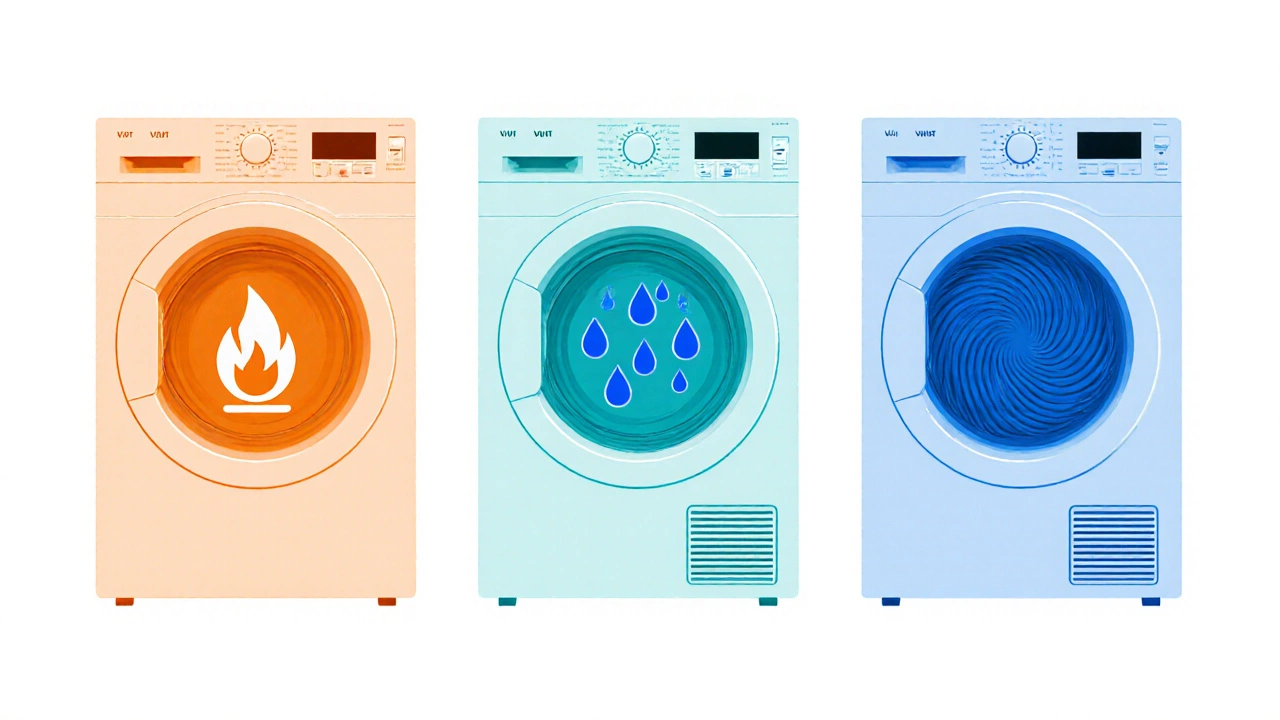
Maintenance checklist to stretch your dryer’s years
A quick monthly routine can add 2‑4 years to the average lifespan:
- Clean the lint filter after every cycle - tap it out and wash with warm water monthly.
- Inspect the vent hose (vented models) for kinks or lint buildup; vacuum it out at least twice a year.
- Wipe the condenser (condenser models) with a soft brush or water‑safe cloth; descale if you live in a hard‑water area.
- Run a short “air‑dry” cycle with the dryer empty once a quarter to burn off residue inside the drum and heating element.
- Check the door seal for cracks; a leaky seal lets moisture escape and forces the thermostat to over‑compensate.
What warranty and energy rating tell you about expected life
Most manufacturers offer a 2‑year parts warranty, but premium brands sometimes extend it to 5 years on the motor. A longer warranty often signals confidence in component durability.
The EU energy label (A+++ to D) isn’t a direct lifespan indicator, but higher‑rated units like heat‑pump dryers run cooler and more efficiently, which translates into less stress on the heating element and motor.
When to consider a replacement instead of a repair
Repair costs can climb quickly when multiple parts fail together. Use this rule of thumb: if the combined price of parts and labour exceeds 50 % of the cost of a comparable new dryer, it’s time to replace.
Typical repair scenarios and cost ranges (2025 UK market):
- Heating element replacement - £70‑£120
- Thermostat or sensor swap - £50‑£90
- Motor overhaul - £150‑£250
- Full heat‑pump compressor failure - £400‑£600 (often uneconomic)
Considering a new dryer also gives you the chance to upgrade to a more energy‑efficient model, saving up to £120 per year on electricity.
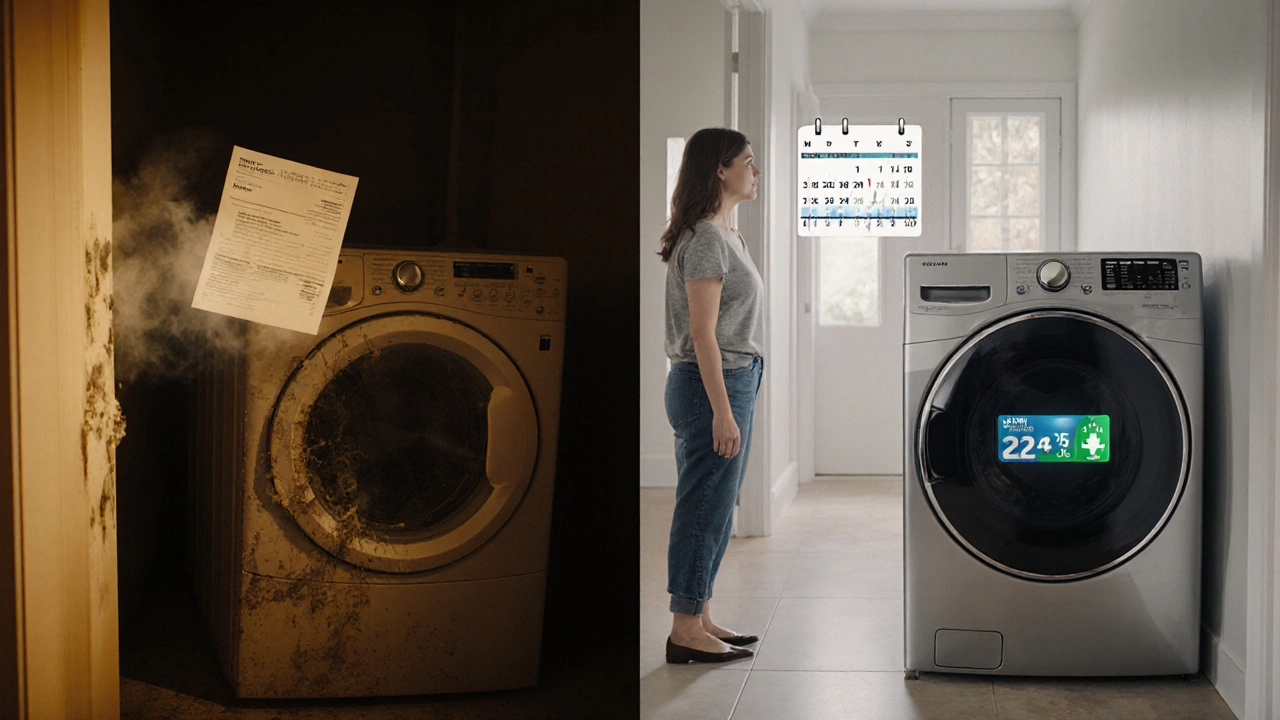
Real‑world examples from UK households
Emma from Bristol bought a vented dryer in 2015. She cleaned the lint filter religiously but never checked the vent hose. In 2022 the heating element burned out, and the repair bill was £115 - she opted for a new condenser dryer instead.
Meanwhile, Marco in Manchester installed a heat‑pump dryer in 2018, followed the monthly condenser clean, and is still within the 5‑year warranty in 2025. He estimates his dryer will keep going until at least 2032.
Bottom line: how long can you really expect your dryer to last?
Summing up the data, a well‑maintained UK tumble dryer typically lasts:
- Vented model: 8‑12 years
- Condenser model: 10‑14 years
- Heat‑pump model: 12‑18 years
Stick to the maintenance checklist, watch for early warning signs (odd noises, longer drying times, hot dryer exterior), and you’ll be squeezing the most out of your investment.
Frequently Asked Questions
What is the average life expectancy of a vented tumble dryer?
A vented dryer in the UK usually lasts between 8 and 12 years if you keep the lint filter clean and check the vent hose regularly.
Do heat‑pump dryers really last longer?
Yes. Because they operate at lower temperatures and have fewer hot‑element cycles, heat‑pump dryers often reach 12‑18 years of service.
How often should I clean the condenser?
At least twice a year, or every three months if you have hard water. A quick brush‑off and a rinse with warm water keeps efficiency high.
Is it worth repairing a dryer that’s 10 years old?
If the repair cost is under half the price of a new, energy‑efficient model, it can make sense. For major motor or heat‑pump failures, replacement is usually cheaper.
Can I extend my dryer’s life by using the Eco‑dry setting?
Eco‑dry runs the dryer at lower temperatures for longer, which reduces stress on the heating element and motor, so it can add a year or two to the overall lifespan.

